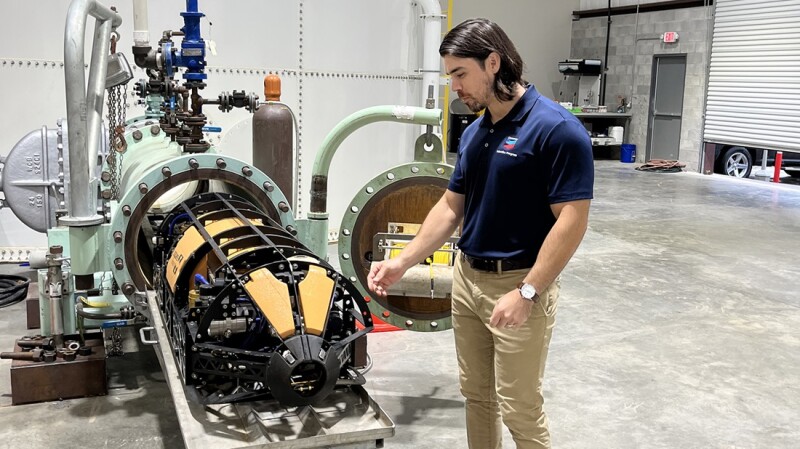Growing up near the oil- and gas-rich Appalachian region of the eastern US, Brandon Baylor always thought he might work in the energy industry.
But he never imagined that his career would involve working with both people and robots. Now a Chevron robotic projects engineer, Baylor recently participated in an initiative to use intelligent machines to reduce the number of human tank inspectors in hazardous environments.
“This was a really profound opportunity that excites me for the future,” he said. “It’s been one of the most effective technology deployments I’ve ever been a part of in my 15-year career.”
Traditionally, inspecting the bottom of a tank—which can hold anything from water to crude oil—involves draining the tank and having a person enter it. Using a submersible robot to perform the inspection instead can:
- Reduce downtime and possible loss of production by removing the need for the tank to be emptied and vented
- Reduce safety risks associated with having a group of people enter a tank
- Increase the availability and quality of data so more effective decisions can be made
Chevron has been striving to reduce risk and eliminate human exposure to hazardous environments, including confined spaces and great heights, through technology.
“This is meant to keep people out of harm’s way and keep them safer,” Baylor said. “The No. 1 way to eliminate risk is to remove the person from the hazard.”

